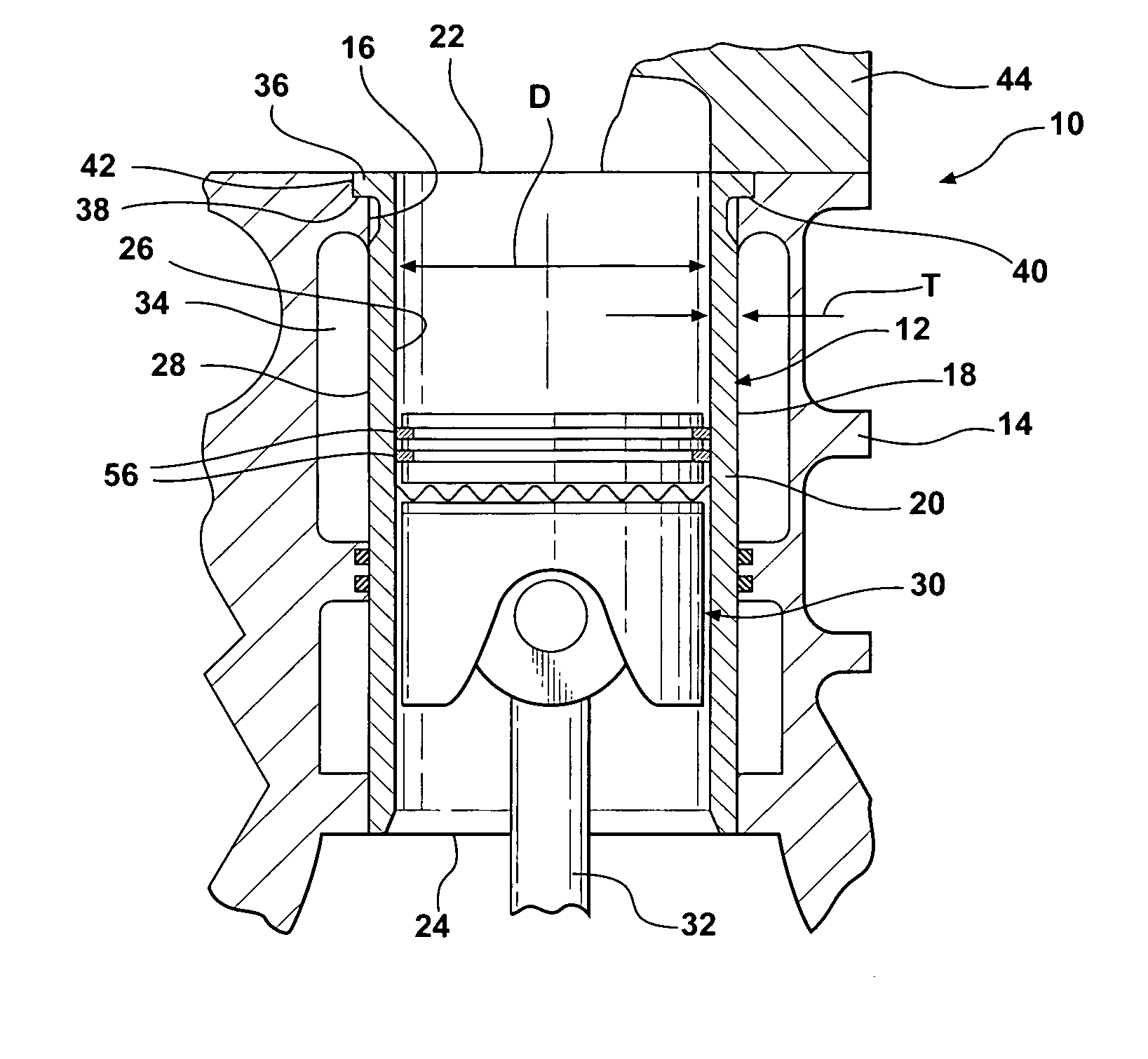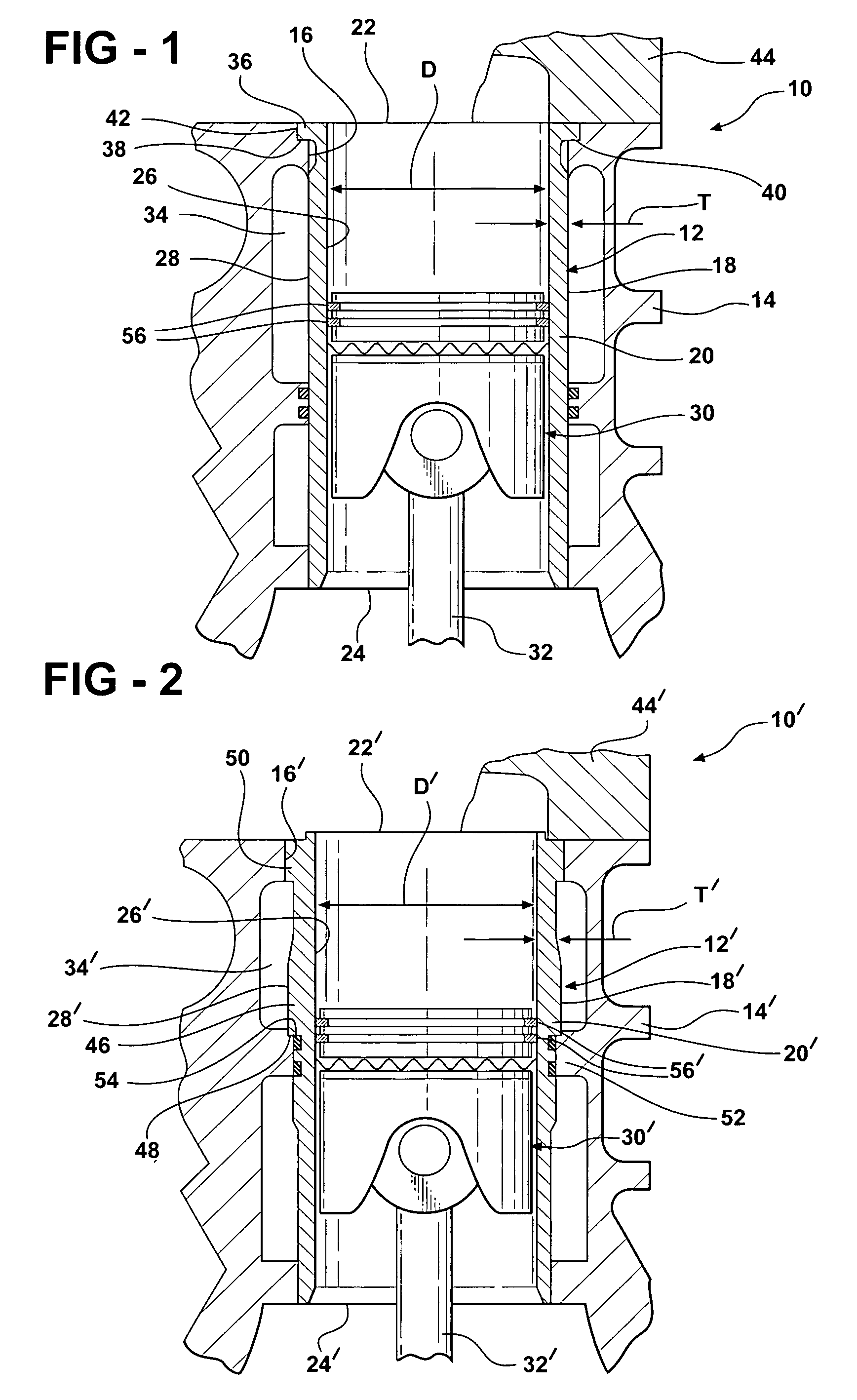High strength steel cylinder liner for diesel engine
a high-strength steel and cylinder technology, applied in the direction of cylinders, machines/engines, mechanical equipment, etc., can solve the problems of limiting the thinness of the cast iron liner, and reducing the performance of the engine, so as to reduce the corrosive effects of the egr environment, the effect of high strength and greater bore diameter
- Summary
- Abstract
- Description
- Claims
- Application Information
AI Technical Summary
Benefits of technology
Problems solved by technology
Method used
Image
Examples
Embodiment Construction
[0015]Turning now in more detail to the drawings, FIGS. 1 and 2 illustrate fragmentary cross-sectional views of a diesel engine 10, 10′ fitted with top-stop and mid-stop liners 12, 12′, respectively. The same reference numerals are used to designate like features of the embodiments of FIGS. 1 and 2, but those of FIG. 2 are primed.
[0016]The diesel engine 10, 10′ includes an engine block 14, 14′ formed with at least one piston bore 16, 16′ in which the liner 12, 12′ is removably mounted. The liners 12, 12′ have a generally cylindrical body 18, 18′ defined by a liner wall 20, 20′ of predetermined thickness. The liner 12, 12′ extends longitudinally between an upper or top end 22,22′ and an opposite bottom end 24, 24′ which are both open-ended. The wall 20, 20′ presents in inner running surface 26, 26′ and an outer surface 28, 28′. A piston 30, 30′ is received in the liner 12,12′ and is operatively coupled to a crank (not shown) of the engine 10, 10′ by a connecting rod 32,32′ for drivin...
PUM
| Property | Measurement | Unit |
|---|---|---|
| texture roughness descriptor | aaaaa | aaaaa |
| texture roughness descriptor | aaaaa | aaaaa |
| roughness | aaaaa | aaaaa |
Abstract
Description
Claims
Application Information
 Login to View More
Login to View More - R&D
- Intellectual Property
- Life Sciences
- Materials
- Tech Scout
- Unparalleled Data Quality
- Higher Quality Content
- 60% Fewer Hallucinations
Browse by: Latest US Patents, China's latest patents, Technical Efficacy Thesaurus, Application Domain, Technology Topic, Popular Technical Reports.
© 2025 PatSnap. All rights reserved.Legal|Privacy policy|Modern Slavery Act Transparency Statement|Sitemap|About US| Contact US: help@patsnap.com


